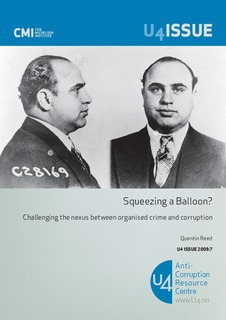Squeezing a balloon? Challenging the nexus between organised crime and corruption
Research report
Permanent lenke
http://hdl.handle.net/11250/2474614Utgivelsesdato
2009-07-23Metadata
Vis full innførselSamlinger
- Publications [1488]
Originalversjon
Bergen: Chr. Michelsen Institute (U4 Issue 2009:7) 38 p.Sammendrag
Corruption and organised crime are of great concern to the international community: while the first is regarded as one of the greatest barriers to development, the second is seen as a key threat to international security and stability. In this context, corruption is best understood as the way in which organised crime infiltrates the state. Corruption is one of the primary enabling activities of organised crime, it makes possible and/or facilitate the conduct of this type of criminal activities. This U4 Issue argues that understanding the connections between both phenomena requires a deeper analysis of the relationships between organised criminals and public officials at different levels of the state. First, international standards and conventional wisdom tend to embrace a limited range of the possible policies that may be employed to tackle organised crime and the corruption, and are heavily oriented towards criminal law and enforcement. Second, policies to tackle both problems are usually developed without applying sound principles of policy‑making. The author argues for the development of policies based on proper analysis of the specific context, breaking down the problem into clear components, identifying their causes, and selecting specific and appropriate measures to address each component or causal factor. In particular, the author suggests there is a pressing need to correct the current bias towards criminal law enforcement solutions.
